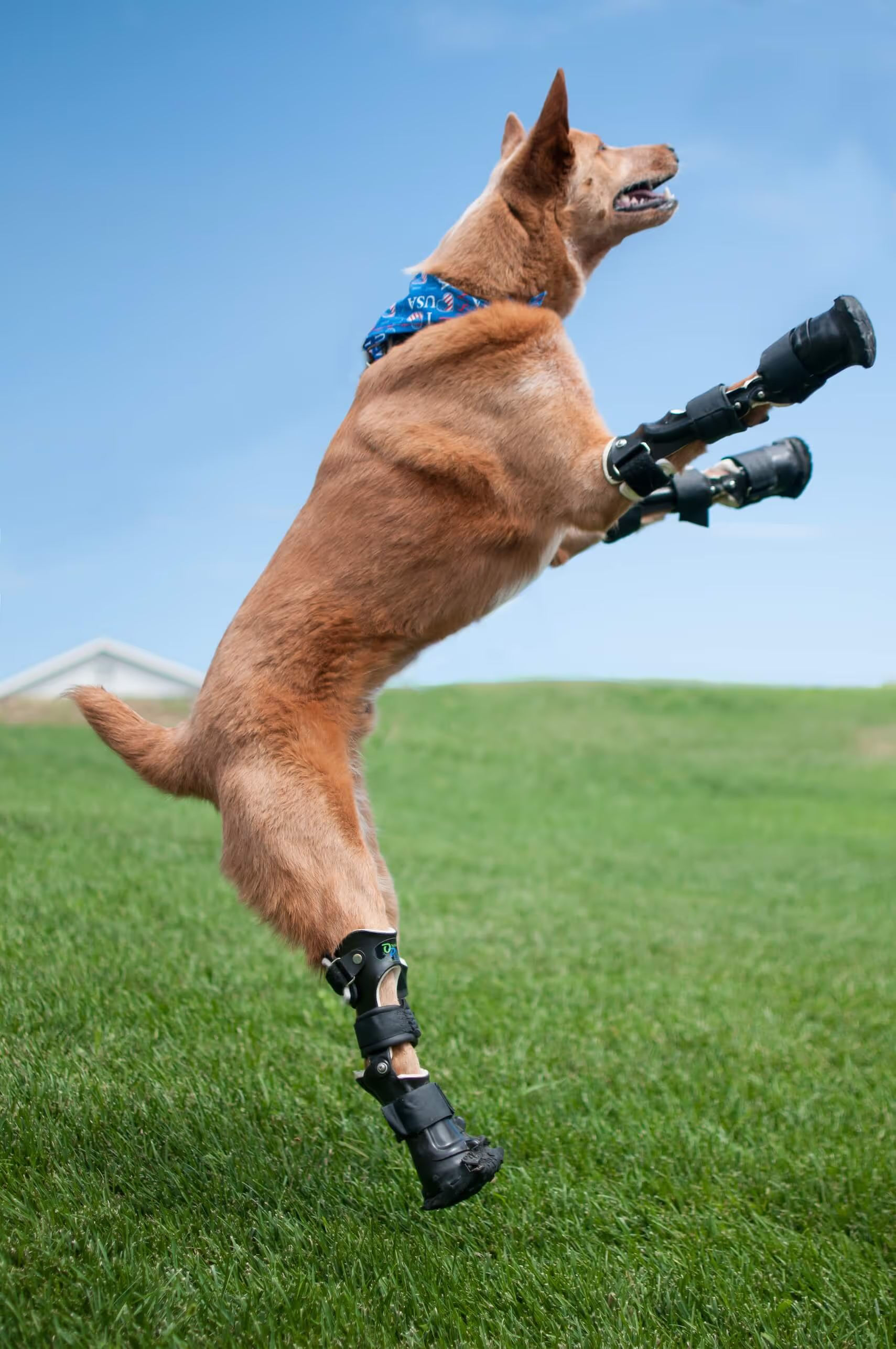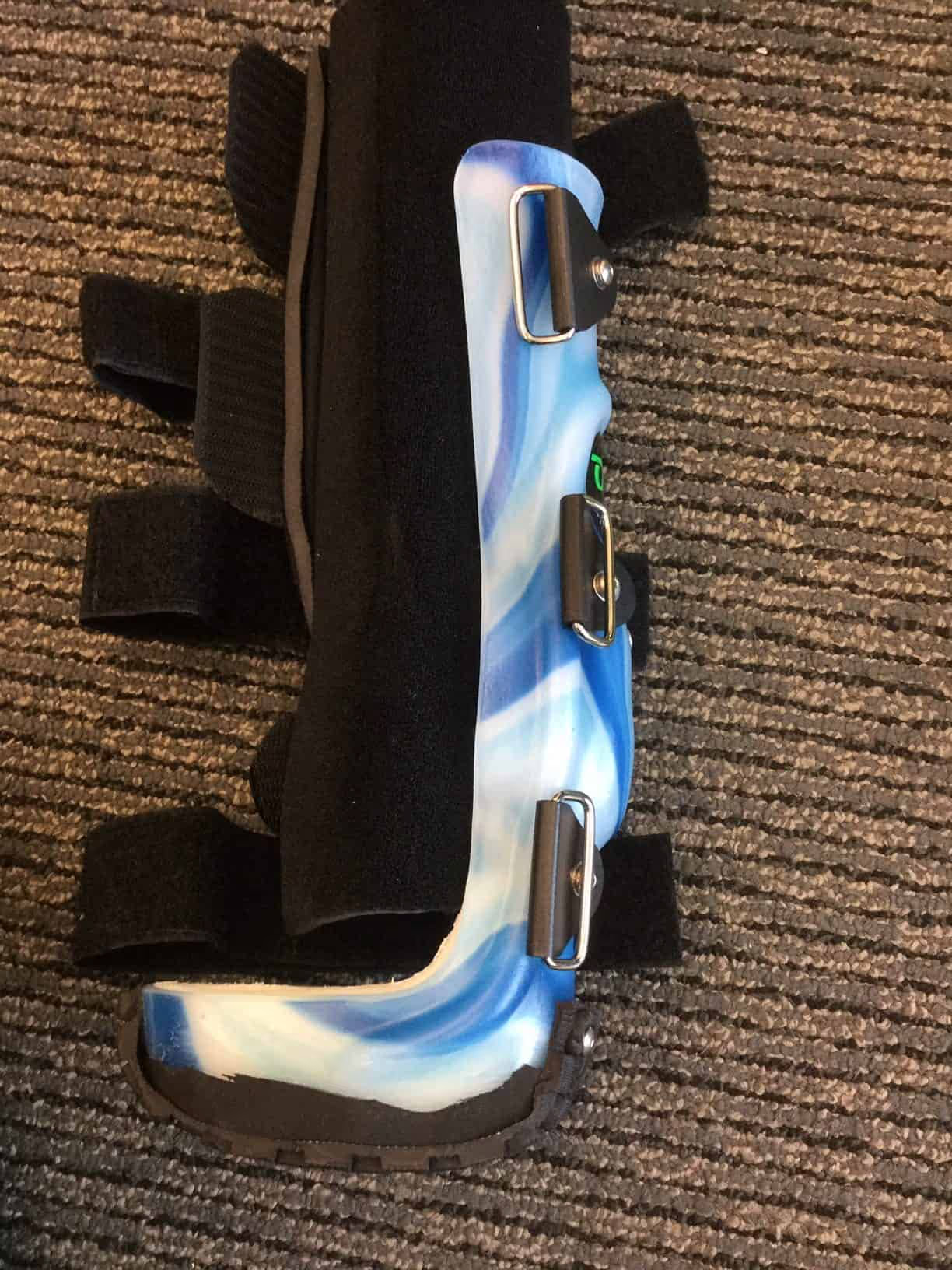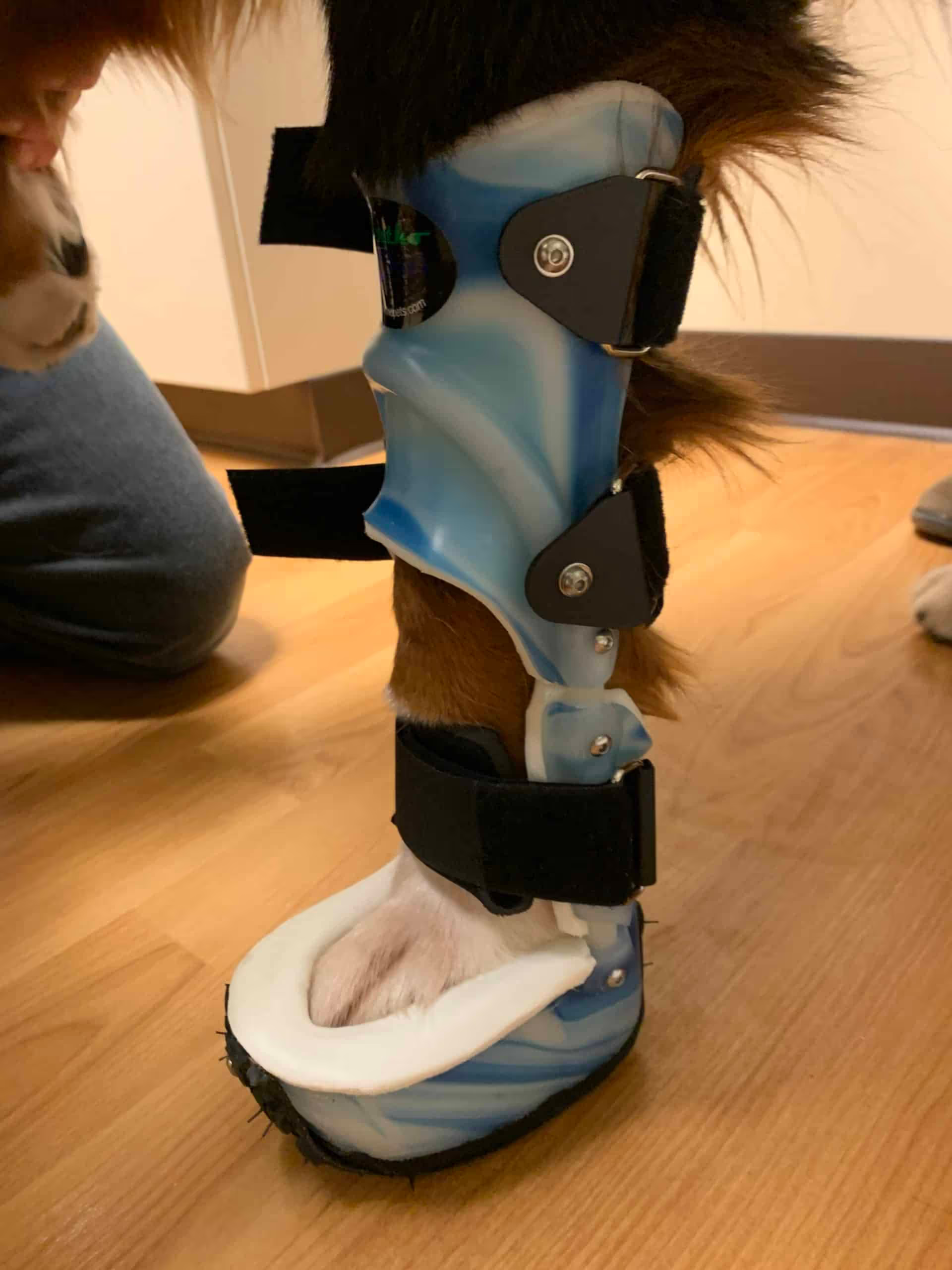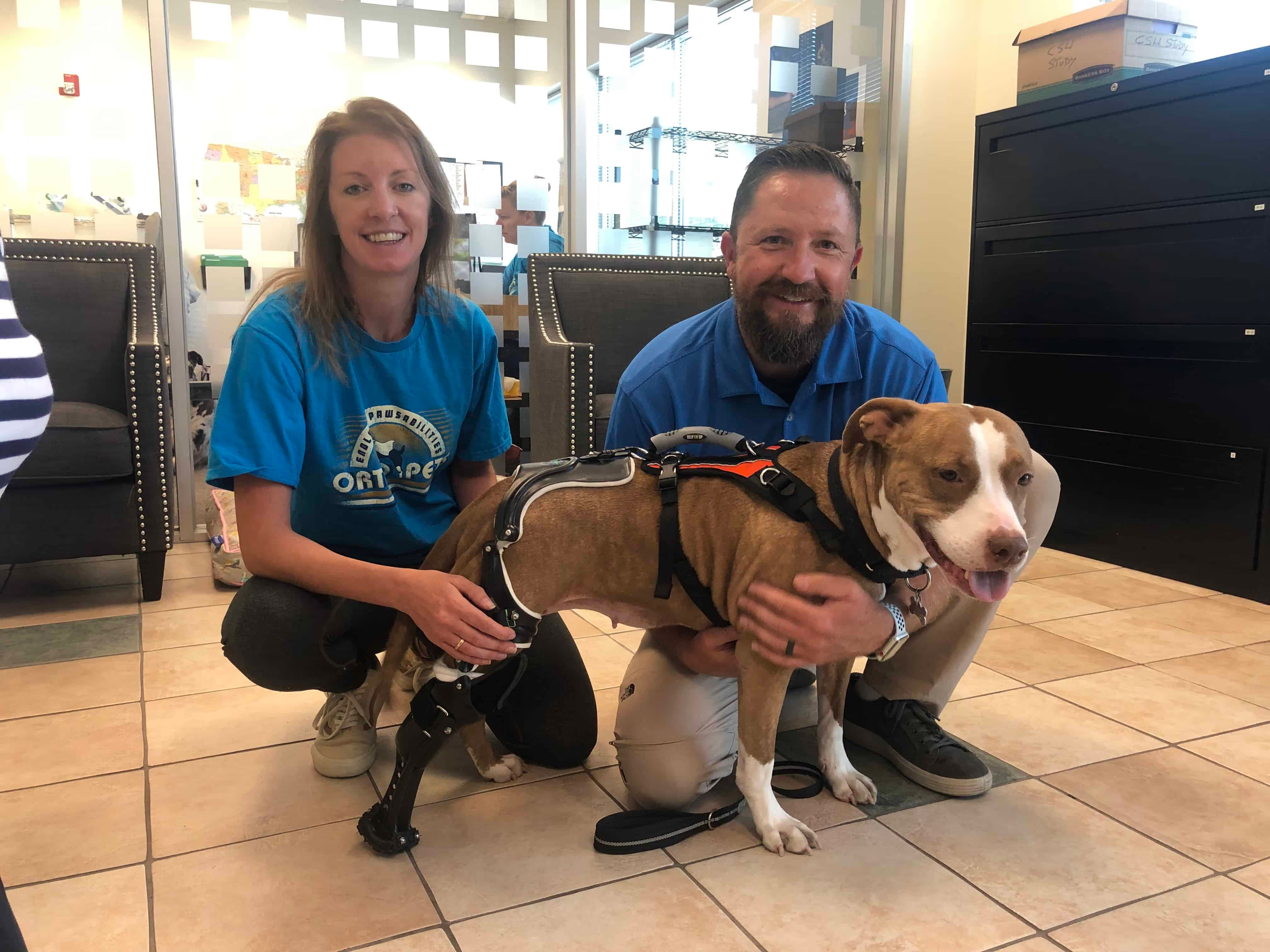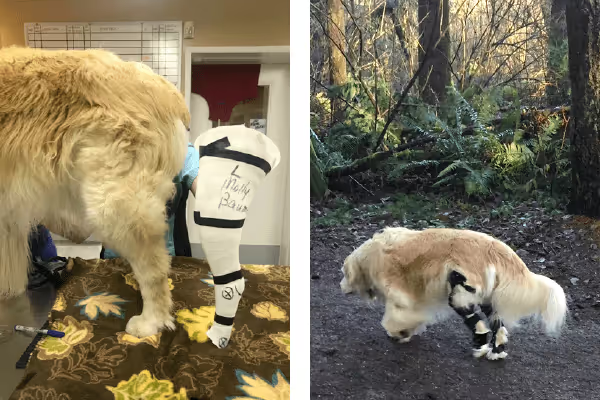Kaia and her OrthoPets Forelimb Prosthetic Device

OrthoPets Case Study: Kaia [caption id="attachment_4265" align="alignright" width="331"]

Fitting Kaia's prosthetic.[/caption]Any prosthetic case can be tricky to work with. There are many factors in play that can determine the failure or success of a prosthesis. To determine some of these factors and get a more objective assessment of this novel treatment option for dogs we have been working closely with Dr. Felix Duerr from Colorado State University (CSU). CSU is conducting a prospective study evaluating prosthetic devices for dogs with lower limb pathology. More information about the study can be found here - there are still a few spots for enrollment that may benefit your patient!Choosing to avoid a full limb amputation and pursuing a partial limb amputation requires life-long dedication from the owner and the need for a team of dedicated individuals (frequently including a surgeon, veterinarian, and rehabilitation specialist). We at OrthoPets are happy to aid with the fabrication of the device as well as supporting the animal health professionals, the pet, and the client for the life of the patient.The main challenges we face in veterinary prosthetic patients is device suspension, device rotation and of course the possibility of pressure sores or friction. Compared to people, we cannot use suction devices/techniques to aid with the suspension in our furry patients. Therefore, we require a minimum limb length that facilitates suspension of the device and avoids rotational problem. In our experience, the required length in order for us to fabricate a functional prosthesis for a patient is approximately mid-way of the radius/tibia. This is a general guideline, however, success depends on many individual patient factors particularly the anatomy and presence of bony prominences.Limb shortening due to osseous defects/discrepancy can be addressed with the use of a procedure called Distraction Osteogenesis. This process involves cutting of the bone and slowly separating the two bone ends allowing the gap to fill in and essentially lengthen the bone. This procedure is used in canine patients for the treatment of angular limb deformities with limb length discrepancy, however, it has not been reported in the veterinary literature to facilitate the attachment of a prosthetic device. One of our Partner Clinics, Port City Veterinary Referral, in New England, had been working with a young pit bull named Kaia that unfortunately did not meet the minimum limb length requirements for the prosthesis. Luckily, Kaia's owner is a veterinarian and was up for any sort of challenge! He worked alongside a surgeon, our Partner Clinic and Martin here at OrthoPets. Together they developed the idea of using Distraction Osteogenesis in the hopes of lengthening her limb enough so that we would be able to suspend a prosthesis for her.[caption id="attachment_media-2" align="aligncenter" width="600"]

Pre-procedure radiographs.[/caption]Kaia's surgery was performed in September 2016, and by January 2017 she had 2.5 cm of bone growth based on radiographs. By April 2017 the external fixator was removed, and Kaia had enough limb length for the suspension of a prosthesis. Though there was a slight curvature to the limb and bone healing was not complete, Kaia's team decided to move forward and get her into the prosthesis. Kaia did wonderfully at her first fitting and is using the limb well. Kaia continues to spend time working on her gait re-education and functional integration of the residuum into a quadruped gait.[caption id="attachment_media-3" align="aligncenter" width="600"]

Post-procedure radiographs.[/caption]Kaia is a great example of how thinking outside the box by her owner as well as her veterinary and VOP team can help solve problems that seem impossible to solve!

